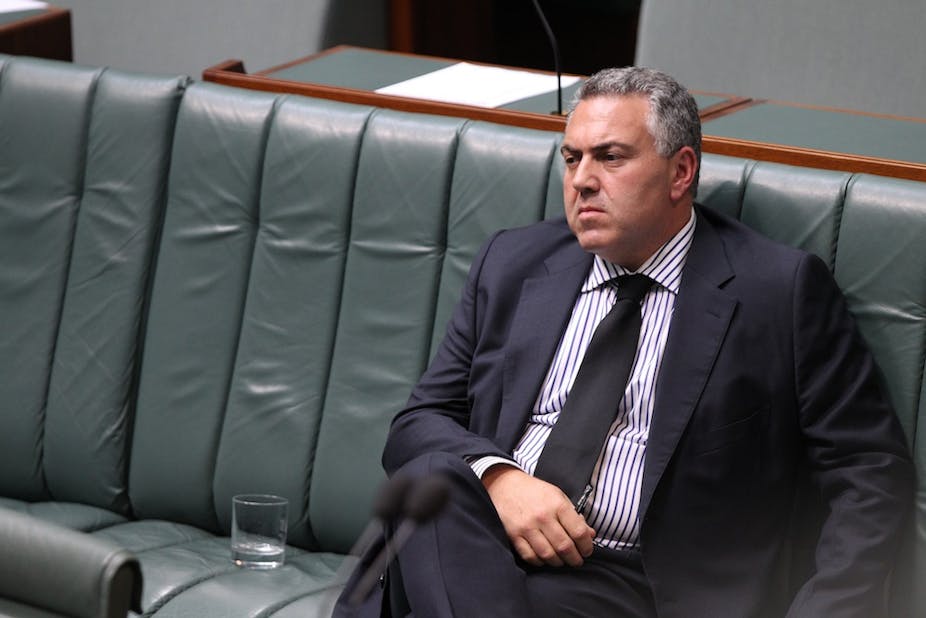Media reports preceding the mid year economic and fiscal outlook suggest we should expect a deficit of just under A$50 billion, a further deterioration of Australia’s budget position since the pre-election figures were released in late August.
Such a deterioration underlines the continuing budget policy conflict facing both the commonwealth and state governments in balancing the need to address the structural budget deficit against compelling expenditure priorities.
Over the medium and longer term, the underlying structural budget deficits are projected to increase with time. As a result, current expenditure and taxation policies are unsustainable. In the immediate future, there is considerable evidence of a flat economy with insufficient private sector demand to support full employment.
Why our structural deficit will persist
A number of reports, including Treasury’s 2010 Intergenerational Report, Grattan Institute’s Budget Pressures on Australian governments, and PricewaterhouseCoopers project future government expenditure under current programs to increase as a share of national income. While the specific growth number and details vary across the reports, they all project the share of government expenditure to increase from the current level of about 32% of national income by another 2-4 percentage points by the 2020s and further increases into the future.
Increases in health expenditure per person are the principal driving force, in part as a result of technological gains contributing to longer life expectancy and good health. Ageing of the population also contributes, and especially a fall in the number of people in the workforce relative to the number of dependents.
These projections have not factored in anticipated new expenditure programs such as the National Disability Insurance Scheme, the Gonski education reforms (which the government at first announced it would dump (only to later resurrect in an altered form), the Coalition’s $5.5 billion paid parental leave scheme and fast-tracked infrastructure projects designed to help offset the departure of Holden, or the proposed restoration of expenditures on defence and foreign aid to previous target levels.
Ultimately, government deficits have to be funded by higher taxation on future generations. Deficits raise borrowing costs, which further add to the budget challenge. Also, a larger and larger accumulated deficit reduces the ability of government to provide an effective fiscal stimulus to encounter inevitable future downturns of the economy. So, long term and growing deficits are unsustainable.
Governments, and the electorate, will have to confront major challenges to reduce the unsustainable structural deficits. Lower deficits require a combination of more efficient government expenditures, higher taxation, and reducing expenditures on lower priority projects. General consensus is that improved productivity is available, especially from rationalising commonwealth–state overlaps of education, health, and regulations, but not enough to solve the deficit problem.
Taxation reform, let alone taxation increases (such as expanding the GST), appear to have been deferred pending an inquiry with Abbott promising any changes would be taken to the next election. But by default, a comprehensive review of the reasons for, the structure of, and the delivery of, all government expenditure programs with a longer term horizon has to be a major component of future budgets. The Commission of Audit should provide a strong starting point for this expenditure review task.
The need to tackle unemployment
The slow rate of economic growth and higher unemployment (which has risen from 5.4% to 5.8%) suggest the need for a net contribution of fiscal policy to aggregate demand. Also, the economy is involved in a painful process of significant structural adjustment, and the fall in the terms of trade means a loss of real income.
A short term deficit position could be justified with automatic stabilisers only. More contentious is the need for a discretionary fiscal stimulus, especially when monetary policy still has some room to move.
To argue that macroeconomic policy is fine because Australia’s unemployment rate is low by international standards, is an unsatisfactory and lazy conclusion. A more sensible policy question is: can we increase national income, equity and society wellbeing by reducing broadly defined unemployment (that is, the under-employed and workers who have dropped out of job search)?
Treasury and the Reserve Bank of Australia have forecast unemployment to increase to over 6% next year. Another 7.8% of the workforce are classified as underemployed, and wish to work more hours. In addition, the labour force participation rate has been falling, indicating some who would like a job have given up active labour market search. Much could be achieved by reducing unemployment and underemployment, and by raising the participation rate.
The challenge of all governments
An important focus of government fiscal policy has to be both to support job creation in the short run and to raise productivity and national income over the longer term. This task requires a focus on the reasons for and the structure of government expenditure and taxation policies. What is the rationale for and the objectives of government intervention in the economy, and how can government programs assist and not hinder private sector restructuring to move labour and capital from declining value-added activities to new higher value opportunities?
These questions are more important challenges for the economic policies of all tiers of government, and fiscal policy in particular, than a simple focus on the bottom line deficit number.

